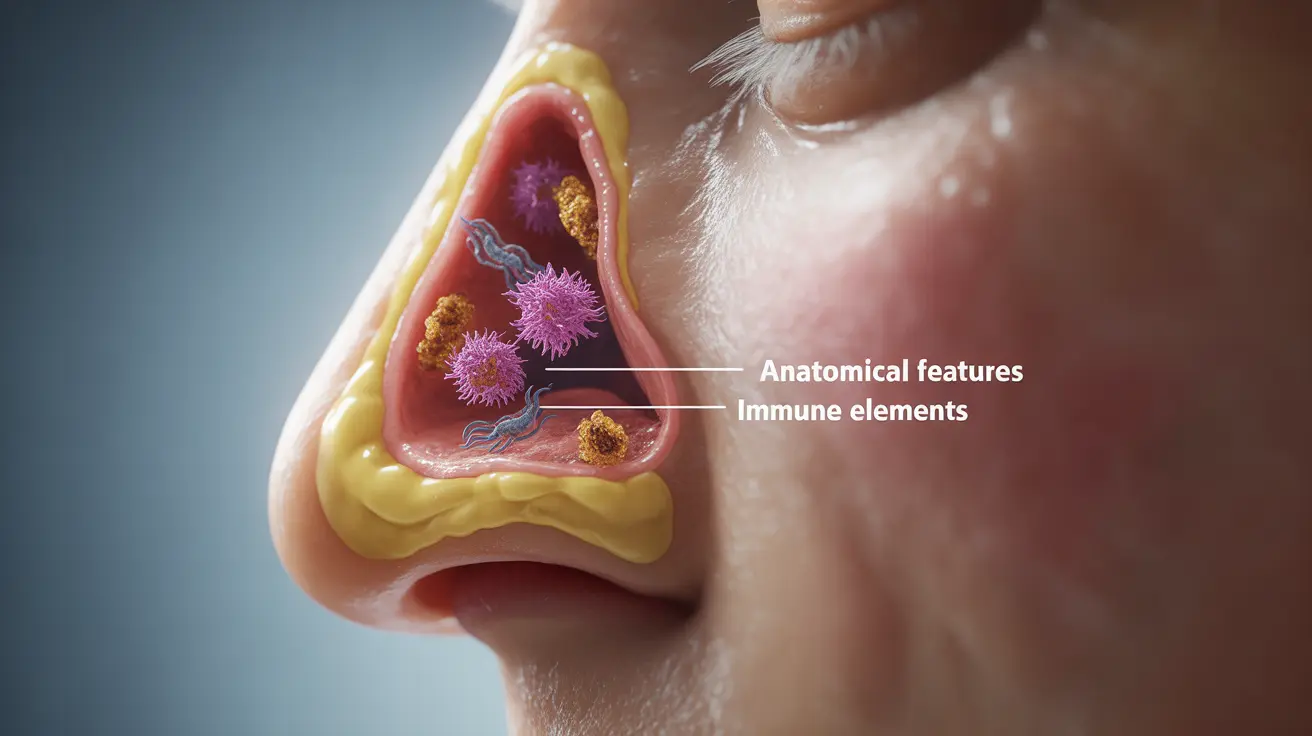When you notice yellow snot or nasal discharge, it's natural to feel concerned about what this change in color might indicate about your health. Yellow mucus is a common symptom that often occurs during respiratory infections or sinus conditions, and understanding its significance can help you determine when to seek medical attention.
In this comprehensive guide, we'll explore what causes yellow nasal discharge, what it might mean for your health, and when you should consult a healthcare provider. We'll also discuss effective treatment options and home remedies to help manage your symptoms.
Understanding Yellow Nasal Discharge
Yellow snot typically indicates that your immune system is actively fighting an infection. When white blood cells are dispatched to combat pathogens in your nasal passages, they can give your mucus a yellowish tinge as they break down during the immune response.
This color change doesn't automatically mean you have a bacterial infection - it's actually a common occurrence in both viral and bacterial infections of the upper respiratory tract.
Common Causes of Yellow Mucus
Viral Infections
Most cases of yellow nasal discharge are caused by viral infections, including:
- Common cold
- Flu (influenza)
- Viral sinusitis
- Other upper respiratory infections
Bacterial Infections
Sometimes, yellow mucus can indicate a bacterial infection, particularly when accompanied by:
- Severe facial pain or pressure
- Fever
- Symptoms lasting longer than 10-14 days
- Worsening symptoms after initial improvement
When to Be Concerned
While yellow mucus alone isn't usually cause for alarm, certain accompanying symptoms warrant medical attention:
- Severe headache
- High fever (over 101.5°F/38.6°C)
- Significant facial swelling
- Vision changes
- Persistent symptoms beyond two weeks
Effective Home Remedies
Several home treatments can help manage symptoms when you're experiencing yellow nasal discharge:
- Nasal irrigation with saline solution
- Steam inhalation
- Staying hydrated
- Using a humidifier
- Getting adequate rest
- Over-the-counter decongestants (when appropriate)
Frequently Asked Questions
What does it mean if I have yellow snot along with nasal congestion and facial pain?
The combination of yellow snot, nasal congestion, and facial pain often indicates sinusitis, which can be either viral or bacterial. These symptoms suggest inflammation in your sinus cavities, but don't automatically mean you need antibiotics.
How long should yellow nasal mucus last before I see a doctor?
If yellow nasal discharge persists for more than 10-14 days, or if symptoms worsen after initial improvement, you should consult a healthcare provider. This duration might indicate a bacterial infection that requires medical treatment.
Can yellow snot indicate a bacterial sinus infection or is it always viral?
Yellow snot can occur in both viral and bacterial infections. While color alone cannot definitively determine the cause, bacterial infections are more likely if symptoms persist beyond 10-14 days or are accompanied by severe facial pain and fever.
What are the best home remedies to relieve symptoms when I have yellow snot from sinusitis?
Effective home remedies include saline nasal irrigation, steam inhalation, staying well-hydrated, using a humidifier, and getting plenty of rest. Over-the-counter decongestants may also provide temporary relief, but should be used as directed.
When should I seek medical care if my yellow snot is accompanied by fever or facial swelling?
Seek immediate medical attention if you experience yellow nasal discharge along with high fever (over 101.5°F/38.6°C), significant facial swelling, severe headache, vision changes, or if symptoms worsen after initial improvement. These could indicate a serious infection requiring prompt treatment.




